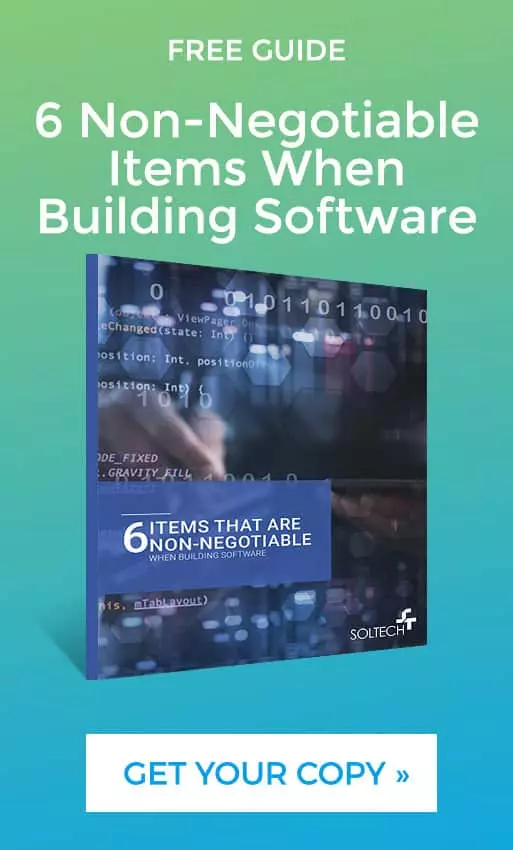
How to Optimize Your App’s Engagement Strategy Through Redesign
By Thayer Tate
Many enterprise apps today deliver polished user experiences and impressive features that streamline how people work. Yet what truly distinguishes lasting solutions from fleeting ones is how well they keep users meaningfully engaged. In a market defined by rapid innovation, engagement isn’t just about retention; it’s about creating value that grows over time.
For developers and business leaders alike, the challenge isn’t just building a great product. It’s about cultivating an experience that continues to earn attention and trust. As users become more selective and privacy-conscious, engagement becomes a conversation, not a transaction. The organizations that approach it this way are the ones that build loyalty and drive measurable impact.
In this guide, I’ll share strategies and insights to help you strengthen your app engagement plan and position your enterprise applications for long-term success.
What is an App Engagement Strategy?
Before we lay out the steps to boosting your enterprise app’s adoption rates, let’s first establish what your strategy should aim to accomplish. An app engagement strategy is a deliberate plan to engage, activate, and retain users by guiding them through a meaningful app experience. While marketing attracts users, engagement ensures they stay on your site and come back for more.
Increasing mobile app engagement starts with considering these three main stages of a user’s lifecycle:
- Activation: Are you showing your users the benefit of your app quickly and efficiently when they first enter your platform?
- Engagement: What will keep them engaged throughout their experience(s) on your platform?
- Retention: How do you plan to turn your infrequent users into everyday champions for your brand?
The stakes are high. The average app loses 77% or more of its daily users within just three days of activation. But companies that invest in lifecycle-aware engagement tactics, such as personalized onboarding or timely push notifications, can double that retention rate or more.
It’s important to note as well that your app engagement strategy is not a set-and-forget type of plan. It will need to be consistently analyzed and optimized over time to adapt to shifting user behaviors.
The 6 Levers of Enterprise App Redesigns for Engagement
Every successful mobile engagement strategy leans on a few proven drivers. Think of these as the levers you can pull to build lasting engagement and trust, rather than quick fixes that fail to create meaningful impact
1. Discovery Through User and Stakeholder Interviews
Successful enterprise app redesigns start by asking questions of those who use it the most. Listen carefully to your users and key stakeholders to find out where your platform may be falling short. Structured interviews bring clarity to pain points, business goals, and engagement blockers before a single line of code is written.
2. Tracking Instrumentation During Redesign
Event tracking is the backbone of any engagement strategy. During a redesign or rebuild, it’s critical to define and implement the right events to track, whether it be sign-ups, purchases, or feature interactions, to ensure you measure what drives real user behavior. This data will help drive ongoing optimizations.
3. Performance Budgeting
Slow apps lose users. Performance budgeting establishes measurable goals for load time, API responsiveness, and resource utilization early in the development cycle. By setting and enforcing these benchmarks, teams ensure the app remains fast, efficient, and reliable, directly supporting higher user retention and stronger enterprise app adoption.
4. Leverage Notifications
Another key step of your app engagement strategy should focus on what users respond to. For example, 60% of users engage more frequently with apps that send them timely notifications. Your platform should accurately reflect the user journey. This approach keeps experiences seamless across devices, channels, and workflows.
5. Security-by-Design
Trust is the cornerstone of sustained engagement with any enterprise application. Embedding security from the outset—through encryption, authentication, and responsible data management—builds confidence among users and stakeholders alike. When people know their information is protected, they engage more freely, complete transactions with assurance, and become advocates for your app’s reliability.
6. Analytics for Continued Optimizations
Once your systems are live, analytics become the engine of continuous improvement. Dashboards, heatmaps, and behavioral data reveal how users interact with key features and where engagement can grow. The real value lies in translating these insights into decisive action. By embedding data-driven iteration into your process, you ensure your mobile engagement strategy evolves in step with changing user needs and business priorities.
Redesigning for Engagement: Fixing What Holds Your App Back
Once you’ve established an engagement strategy, the next step is understanding what’s holding your app back. Redesigns focused on engagement don’t just update aesthetics; they remove friction, improve flow, and create a more intuitive experience that drives adoption. Here are some of the most common challenges they address:
Slow Performance
Speed is non-negotiable. Even a few seconds of delay can break user focus and trust. Prioritizing performance throughout the design and development process ensures your app feels fast, responsive, and dependable.
Poor User Navigation
If users can’t accomplish tasks efficiently, they won’t stay. Simplified menus, clear calls to action, and consistent design patterns help users find what they need quickly and confidently.
Misaligned Workflows
When digital workflows don’t reflect real-world processes, users encounter friction. Mapping workflows early ensures alignment with user behavior and business operations—leading to smoother adoption across the enterprise.
Missing Integrations
Modern enterprise users expect seamless connectivity. Integrating key systems like CRMs, payment gateways, analytics, or IoT platforms eliminates context switching and creates a unified experience.
Data Debt
Redundant or siloed data slows decision-making and undermines insight. A strong engagement strategy includes data audits and governance practices that keep information accurate, accessible, and actionable.
At SOLTECH, we help organizations uncover these opportunities through UX and technology audits, followed by comprehensive redesign strategies tailored to enterprise needs. If your team is considering an app refresh, our experts can help you build a solution that performs better, engages deeper, and scales with your goals. Contact us today to learn more.
FAQs
How can I increase mobile app engagement?
Start with a well-defined app engagement strategy that aligns with your business goals. Map the entire user journey—from onboarding to long-term retention—and identify where you can add value at each stage. Combine intuitive design, strong performance, and personalized experiences to keep users connected. Above all, use data and feedback loops to continuously refine your approach as user expectations evolve.
Thayer Tate
Chief Technology Officer Thayer is the Chief Technology Officer at SOLTECH, bringing over 20 years of experience in technology and consulting to his role. Throughout his career, Thayer has focused on successfully implementing and delivering projects of all sizes. He began his journey in the technology industry with renowned consulting firms like PricewaterhouseCoopers and IBM, where he gained valuable insights into handling complex challenges faced by large enterprises and developed detailed implementation methodologies.
Thayer is the Chief Technology Officer at SOLTECH, bringing over 20 years of experience in technology and consulting to his role. Throughout his career, Thayer has focused on successfully implementing and delivering projects of all sizes. He began his journey in the technology industry with renowned consulting firms like PricewaterhouseCoopers and IBM, where he gained valuable insights into handling complex challenges faced by large enterprises and developed detailed implementation methodologies.
Thayer’s expertise expanded as he obtained his Project Management Professional (PMP) certification and joined SOLTECH, an Atlanta-based technology firm specializing in custom software development, Technology Consulting and IT staffing. During his tenure at SOLTECH, Thayer honed his skills by managing the design and development of numerous projects, eventually assuming executive responsibility for leading the technical direction of SOLTECH’s software solutions.
As a thought leader and industry expert, Thayer writes articles on technology strategy and planning, software development, project implementation, and technology integration. Thayer’s aim is to empower readers with practical insights and actionable advice based on his extensive experience.



